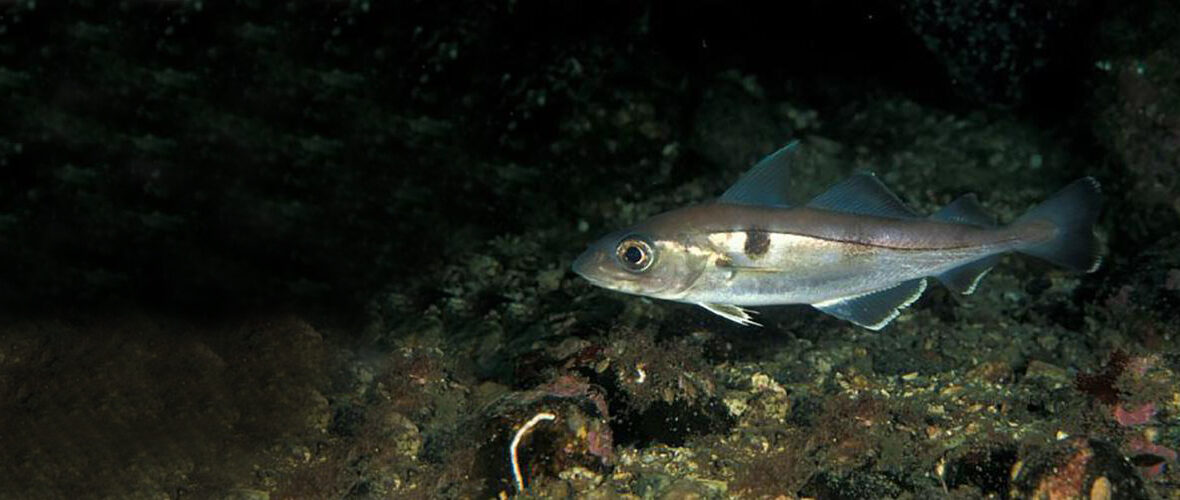
The haddock is a member of the true cod family. They can be found primarily in the north Atlantic Ocean. They are a heavily fished species, predominantly in northern Europe. Unfortunately, these aquatic residents are being overfished, despite organizations stating otherwise, and thus they are listed as Vulnerable by the IUCN. Their population trend is unknown.
First the Stats…
Scientific name: Melanogrammus aeglefinus
Weight: Up to 7 lbs.
Length: Up to 37 inches
Lifespan: Up to 10+ years
Now on to the Facts!
1.) These fish are caught and marketed fresh, frozen, and smoked.
2.) They can be found at depths of up to 1,500 feet.
3.) Haddocks are demersal (live near or on the ocean floor).
4.) Their preferred temperature range is 39°F – 50°F.
5.) The specimens that live off the coast of Iceland and in the Barents Sea partake in migrational behaviors, whereas the ones in the western Atlantic are more stationary.
But wait, there’s more on the haddock!
6.) These fish were first described in 1758 by Carolus Linnaeus as Gadus aeglefinus. Later, in 1862, they were renamed to the current Melanogrammus aeglefinus by Theodore Nicholas Gill.
7.) Females can lay up to 1,841,000 eggs.
Did you know…?
Like all codfish, they are troubled by parasites, like the cod worm. These parasites latch onto the gill filaments and feed on the blood of these fish. They will also mate while attached to the fish.
8.) Eggs take up to 3 weeks to hatch.
9.) Upon hatching, the larval fish remain pelagic (dwell in the open sea) until they reach about 3 inches.
10.) The larval fish feed on copepods. Young fish feed on krill, copepods, and smaller fish. Adults feed on invertebrates, sand eels, and other bottom dwelling fish.
But wait, there’s more on the haddock!
11.) Danish seine nets, long lines, trawlers, and gill nets are typically used to catch these fish, as well as bycaught cod and other ground fish.
12.) From 1980 – 2017, in the eastern Atlantic, approximately 350,000 tons were fished. These numbers have decreased over time.
Did you know…?
Haddocks have a black marking above the lateral fin, called the devil’s thumbprint. Legend has it that when a haddock was caught and released back into the water by St. Peter, the devil tried to grab it back from the water, leaving a black thumbprint on the fish.
13.) In the western Atlantic, in circa 1960s, approximately 30,000 tons were brought in. Those numbers have declined sharply since.
14.) Even though they are listed as Vulnerable by the IUCN, all 7 stocks gathered in the eastern Atlantic are currently listed by ICES as being harvested sustainably. The same goes for the western stocks.
15.) These fish remain as a popular food fish to this day around the world.
Now a Short Haddock Video!
Be sure to share & comment below! Also, check out the Critter Science YouTube channel. Videos added regularly!
Want to suggest a critter for me to write about? Let me know here.
Some source material acquired from: Wikipedia & IUCN
Photo credit: NOAA Fisheries



